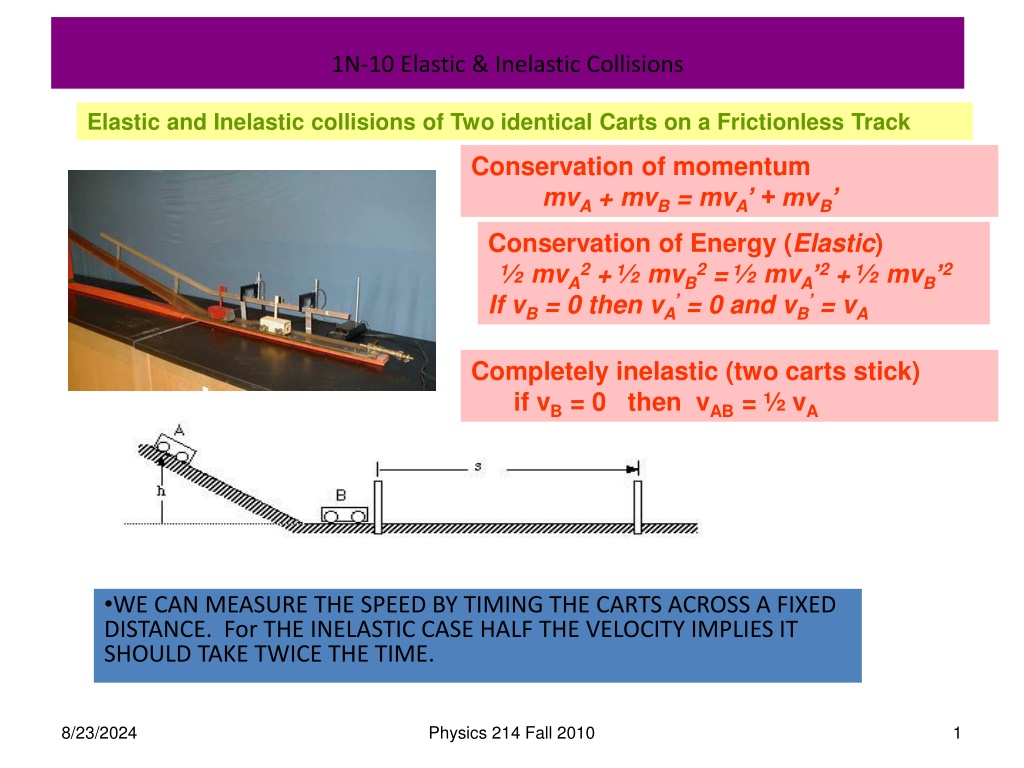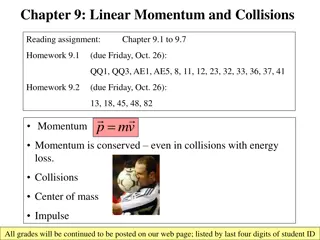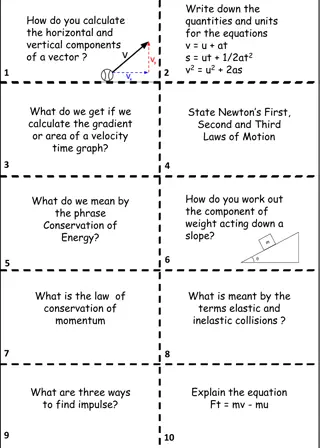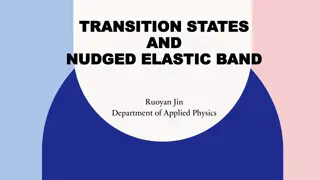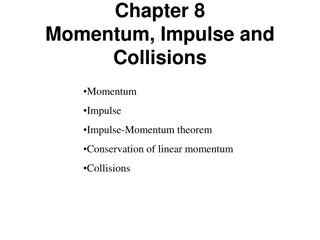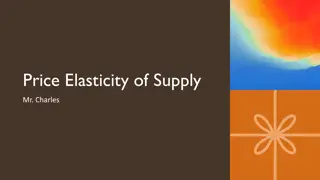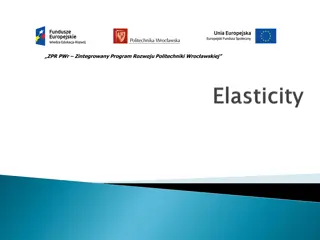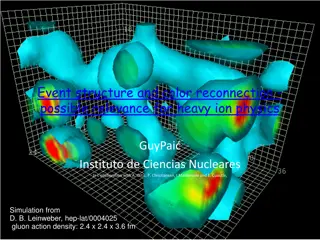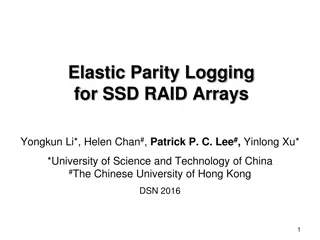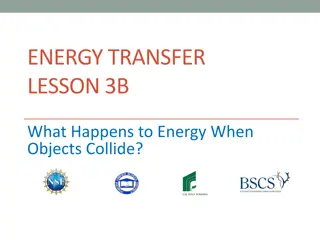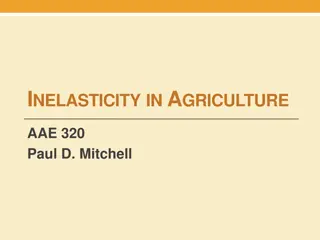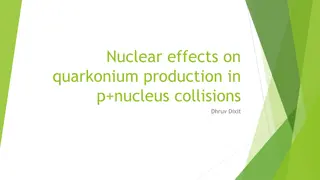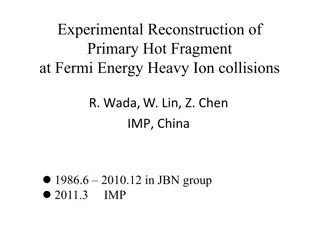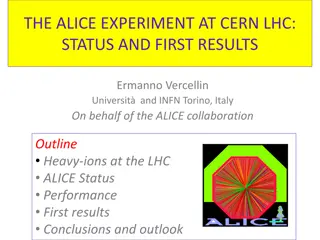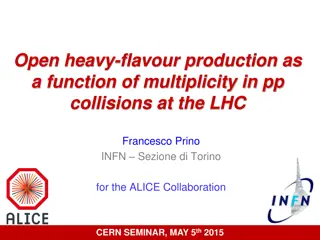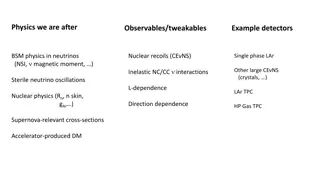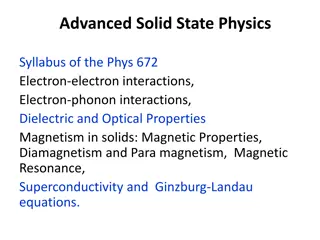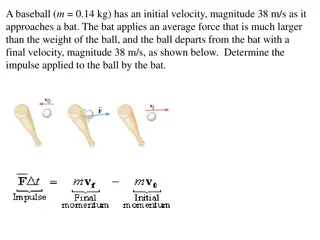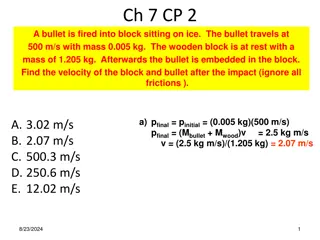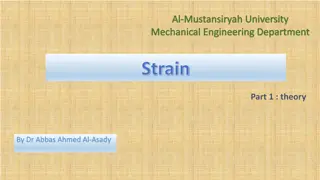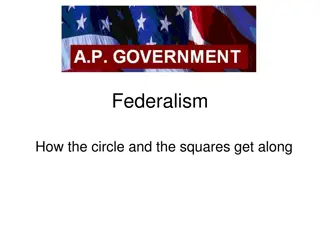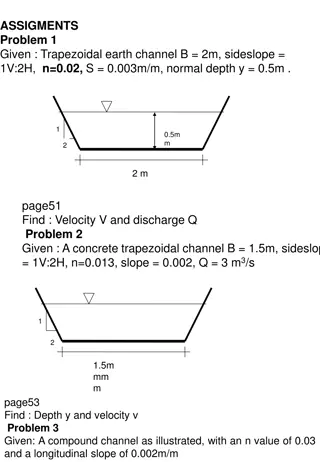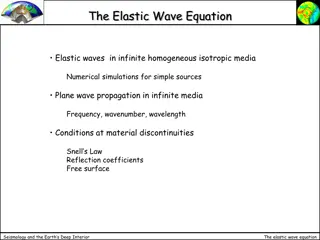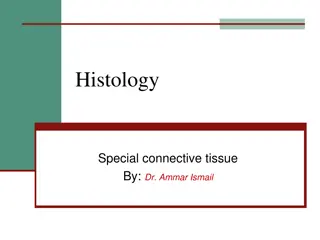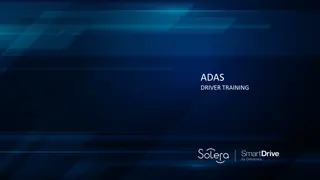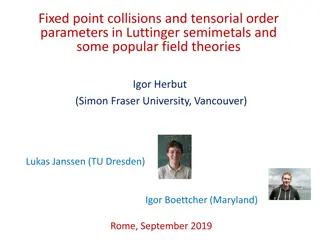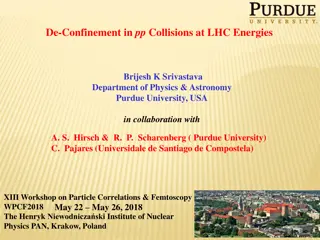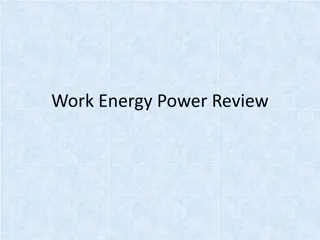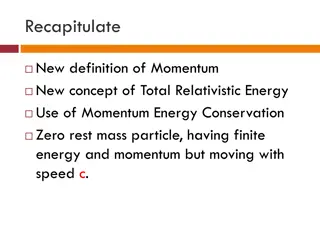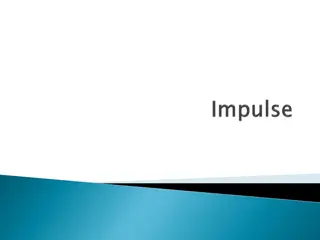Understanding Elastic and Inelastic Collisions in Physics
Exploring the concepts of elastic and inelastic collisions, momentum, impulse, and energy conservation in physics. Topics include measuring speed, advantages of airbags, impact of catching objects, and understanding forces in collisions. Images and explanations demonstrate key principles in physics.
Download Presentation

Please find below an Image/Link to download the presentation.
The content on the website is provided AS IS for your information and personal use only. It may not be sold, licensed, or shared on other websites without obtaining consent from the author. Download presentation by click this link. If you encounter any issues during the download, it is possible that the publisher has removed the file from their server.
E N D
Presentation Transcript
1N-10 Elastic & Inelastic Collisions Elastic and Inelastic collisions of Two identical Carts on a Frictionless Track Conservation of momentum mvA + mvB = mvA + mvB Conservation of Energy (Elastic) mvA2 + mvB2 = mvA 2 + mvB 2 If vB = 0 then vA = 0 and vB = vA Completely inelastic (two carts stick) if vB = 0 then vAB = vA WE CAN MEASURE THE SPEED BY TIMING THE CARTS ACROSS A FIXED DISTANCE. For THE INELASTIC CASE HALF THE VELOCITY IMPLIES IT SHOULD TAKE TWICE THE TIME. 8/23/2024 Physics 214 Fall 2010 1
Q5 Are impulse and momentum the same thing? Explain. No impulse changes momentum Q6 If a ball bounces off a wall so that its velocity coming back has the same magnitude that it had prior to bouncing: A. Is there a change in the momentum of the ball? Explain. B. Is there an impulse acting on the ball during its collision with the wall? Explain. A. Yes momentum is a vector B. Yes a force acts for a short time 8/23/2024 Physics 214 Fall 2010 2
Q9 What is the advantage of an air bag in reducing injuries during collisions? Explain using impulse and momentum ideas. It increases the time over which the force acts. It also spreads the force over a larger area Q11 If you catch a baseball or softball with your bare hand, will the force exerted on your hand by the ball be reduced if you pull your arm back during the catch? Explain. Yes. The impulse is the same but the impact time is longer. From a work point of view the kinetic energy = Fd so increasing d reduces F 8/23/2024 Physics 214 Fall 2010 3
Q17 A compact car and a large truck have a head-on collision. During the collision, which vehicle, if either, experiences: A. The greater force of impact? Explain. B. The greater impulse? Explain. C. The greater change in momentum? Explain. D. The greater acceleration? Explain. A. The forces are equal and opposite B. The impulse for each is the same C. The momentum changes are equal and opposite D. F = ma so a is larger for the compact car Q22 Is it possible for a rocket to function in empty space (in a vacuum) where there is nothing to push against except itself? Yes. It ejects material at high velocity and momentum conservation means the rocket recoils 8/23/2024 Physics 214 Fall 2010 4
Q23 Suppose that you are standing on a surface that is so slick that you can get no traction at all in order to begin moving across this surface. Fortunately, you are carrying a bag of oranges. Explain how you can get yourself moving. Throw the oranges opposite to the direction you wish to move Q24 A railroad car collides and couples with a second railroad car that is standing still. If external forces acting on the system are ignored, is the velocity of the system after the collision equal to, greater than, or less than that of the first car before the collision? The velocity after is exactly half 8/23/2024 Physics 214 Fall 2010 5
Ch 7 E 10 M1 and M2 collide head on a) Find initial momentum of M1 and M2 b) What is the total momentum of the system before collision? 3.5m/s 6.0m/s east west M2 = 80kg M1 = 100kg a) p1 = -100 x 3.5 = 350kgm/s p2 = 80 x 6 = 480kgm/s b) Total momentum = 480 350 = 130kgm/s east 8/23/2024 Physics 214 Fall 2010 6
Ch 7 E 10 M1 and M2 collide head on. Ignore external forces, if they stick together after collision, which way do the masses travel? 6.0m/s M2 = 80kg west 3.5m/s east M1 = 100kg p1 = -100 x 3.5 = 350kgm/s p2 = 80 x 6 = 480kgm/s A.West B. East C. they will all stop Total momentum = 480 350 = 130kgm/s east The masses will travel east with p = 130kgm/sec 8/23/2024 Physics 214 Fall 2010 7
Collisions at an Angle Two football players traveling at right angles to one another collide and stick together. What will be their direction of motion after the collision? Add the individual momentum vectors to get the total momentum of the system before the collision. The final momentum of the two players stuck together is equal to the total initial momentum.
Collisions at an Angle The total momentum of the two football players prior to the collision is the vector sum of their individual momentums. The larger initial momentum has a larger effect on the final direction of motion.
Two lumps of clay of equal mass are traveling at right angles with equal speeds as shown, when they collide and stick together. Is it possible that their final velocity vector is in the direction shown? a) b) c) yes no unable to tell from this graph No. The final momentum will be in a direction making a 45o degree angle with respect to each of the initial momentum vectors.
Ch 7 E 18 A truck of mass 4000kg and speed 10m/s collides at right angles with a car of mass 1500kg and a speed of 20m/s. What s the total momentum of system before collision? A.70000 kg m/s B.10000 kg m/s C.50000 kg m/s D.40000 kg m/s E.30000 kg m/s 8/23/2024 11
Ch 7 E 18 A truck of mass 4000kg and speed 10m/s collides at right angles with a car of mass 1500kg and a speed of 20m/s. What s the total momentum of system before collision? p p1 = 40000 p1 = 40000 p2 = 30000 p2 = p12 + p22 P = 50000kgm/s 8/23/2024 12
Ch 7 CP 2 A bullet is fired into block sitting on ice. The bullet travels at 500 m/s with mass 0.005 kg. The wooden block is at rest with a mass of 1.205 kg. Afterwards the bullet is embedded in the block. Find the velocity of the block and bullet after the impact (ignore all frictions ). a) pfinal = pinitial = (0.005 kg)(500 m/s) pfinal = (Mbullet + Mwood)v = 2.5 kg m/s v = (2.5 kg m/s)/(1.205 kg) = 2.07 m/s A. 3.02 m/s B. 2.07 m/s C. 500.3 m/s D. 250.6 m/s E. 12.02 m/s 8/23/2024 13
Quiz: Two cars of equal mass Collide at right angles to one another in an intersection. Their direction of motion after the collision is as shown. Which car had the greater velocity before the collision? a) b) c) Car A Car B Their velocities were equal in magnitude. It is impossible to tell from this graph. d) Since the angle with respect to the original direction of A is smaller than 45 , car A must have had a larger momentum and thus was traveling faster.
Rotational displacement is how far the object rotates. Units: fractions of a complete revolution; degrees; radians 1 complete revolution = 360o = 2 radians Analogous to linear displacement: the straight-line distance traveled by an object (including direction of travel) 15
Rotational velocity is how fast the object is turning. Units: revolutions per minute (rpm); degrees per second Analogous to linear velocity 16
Rotational acceleration is the rate of change of rotational velocity. Units: revolutions per second per second (rev/s2); radians per second per second (rad/s2) Analogous to linear acceleration 17
Constant acceleration equations for linear and rotational motion v = v0+ at = 0+ t d = v0t +1 = 0t +1 2 t2 2at2 18
Relationship between linear and rotational velocity On a merry-go-round, a rider near the edge travels a greater distance in 1 revolution than one near the center. The outside rider is therefore traveling with a greater linear speed. ? = 2 ? ? ?=2 ? ? v = r 19
A merry-go-round is accelerated at a constant rate of 0.005 rev/s2, starting from rest. What is its rotational velocity at the end of 1 min? 0.005 radian/s 0.3 radian/s 0.05 radian/s 1.88 radian/s a) b) c) d) = 0.005 rev/s2 0 = 0 t= 60 s = 0 + t = 0 + (0.005 rev/s2)(60 s) = 0.30 rev/s = 0.3*2*3.14 radian/s = 1.88 radian/s 20
How many revolutions does the merry-go-round make in 1 minute? 1.5 rev 3.0 rev 9.0 rev 18.0 rev a) b) c) d) = 0.005 rev/s2 0 = 0 t= 60 s, = 0.30 rev/s = 0t + 1/2 t2 = 0 + 1/2 (0.005 rev/s2)(60 s)2 = 9 rev 21
Torque and Balance What causes the merry-go-round to rotate in the first place? What determines whether an object will rotate? If an unbalanced force causes linear motion, what causes rotational motion? 22
Torque and Balance When is a balance balanced? Consider a thin but rigid beam supported by a fulcrum or pivot point. If equal weights are placed at equal distances from the fulcrum, the beam will not tend to rotate: it will be balanced. 23
To balance a weight twice as large as a smaller weight, the smaller weight must be placed twice as far from the fulcrum as the larger weight. Both the weight and the distance from the fulcrum are important. The product of the force and the distance from the fulcrum is called the torque. 24
The distance from the fulcrum to the point of application of the force must be measured in a direction perpendicular to the line of action of the force. This distance is called the lever arm or moment arm. For a force F and a lever arm l, the resulting torque is: = Fl A longer lever arm produces a greater torque. 25
